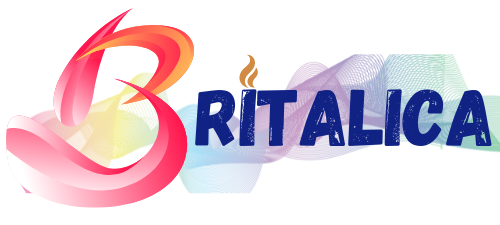If you are looking to one of the most heated topics of this era, then you are at the right destination.
When we talk about the futuristic industry of evolution and change, we cannot ignore the impact of technology and it’s multi fold impact on human race.
The situation is totally up to us how we adapt and encourage such technological advancements.
Let’s delve deeper into the fascinating world of human augmentation and Artificial Intelligence.
Exoskeletons are down with it’s ground breaking discoveries in the sectors like consumers, medical and healthcare, industrial, aerospace and defense, education, and energy/utility.


Market Overview:
- North America leads due to workplace productivity enhancements.
- Europe benefits from advancements in medical wearables.
- Asia Pacific sees growth, driven by awareness and demand in countries like China, India, and Japan.
- Brain-computer interfaces improved typing speed by 61.3%2.
- Medical wearable devices are in demand, driving growth in human augmentation1.
Some of the key technologies include wearables, virtual reality, augmented reality, exoskeletons, and intelligent virtual assistants.
One of the prime examples is of ‘Neuralink’ where the company is achieving milestones in developing the brain chip which can interact with the manually operated machines….
Read more: Tech Enabling Computer Through Thoughts – Neuralink.
In the vast expanse of technological innovation, two realms stand out for their transformative potential: Human Augmentation Technology and Artificial Intelligence (AI). As these fields continue to evolve, they raise critical questions about the future of humans, the economy, employment, aging, and various other aspects of society. In this in-depth exploration, we will navigate the evolution, positive and negative impacts, and implications of Human Augmentation Technology and AI across multiple dimensions.
Evolution of Human Augmentation Technology and AI:
History of Human Augmentation Technology and AI can be traced back to centuries, from the earliest prosthetic limbs to the theoretical musings of early computer scientists. However, it is in the modern era that these technologies have truly flourished, world has seen exponential advances in computing power, data analytics, and machine learning algorithms.
Artificial Intelligence has undergone a remarkable evolution, from simple rule-based systems to complex neural networks capable of learning and adapting to new tasks. Similarly, Human Augmentation Technology has seen significant advancements, with the development of prosthetic limbs, neural implants, and other devices designed to enhance human capabilities.
Positive Impacts:
Healthcare Advancements:
Human Augmentation Technology and AI have revolutionized healthcare, offering new tools for diagnosis, treatment, and patient care. Prosthetic limbs equipped with AI-powered sensors and actuators enable amputees to regain mobility and dexterity. AI algorithms analyze medical data to identify patterns and trends, leading to more accurate diagnoses and personalized treatment plans.
Enhanced Abilities:
AI-driven enhancements have the potential to augment human abilities beyond natural limits. Exoskeletons and wearable devices can increase physical strength and endurance, while neural implants and brain-computer interfaces offer new ways to interact with the world. These enhancements can improve productivity, performance, and quality of life for individuals in various domains.
Economic Growth:
The integration of Human Augmentation Technology and AI into industries such as healthcare, manufacturing, and finance has the potential to drive economic growth and innovation. AI-powered automation can increase efficiency and reduce costs, while Human Augmentation Technology can enhance workforce productivity and enable new forms of human-machine collaboration.
Negative Impacts:
Job Displacement:
The widespread adoption of AI and Human Augmentation Technology could lead to job displacement and economic disruption. Automation may render certain tasks obsolete, leading to layoffs and unemployment in affected industries. Moreover, individuals with outdated skills may struggle to adapt to the changing job market, exacerbating income inequality and social unrest.
Ethical Concerns:
The use of AI and Human Augmentation Technology raises complex ethical questions regarding privacy, consent, and autonomy. Who owns the data collected by neural implants, and how is it used? Should individuals have the right to augment themselves beyond natural human capabilities, and if so, where do we draw the line between enhancement and exploitation?
Social Inequality:
There is a risk that AI and Human Augmentation Technology could exacerbate existing social inequalities. Access to advanced technologies may be limited to those who can afford it, widening the gap between the privileged and the marginalized. Additionally, biased algorithms and discriminatory practices could perpetuate social injustice and discrimination.
Impacts on Aging and Society:
Extended Lifespan:
Human Augmentation Technology and AI have the potential to extend human lifespan and improve quality of life for aging populations. Prosthetic limbs and assistive devices can enable older adults to maintain independence and mobility, while AI-driven healthcare technologies can monitor health status and provide personalized care.
Challenges of Aging:
Despite the benefits, aging populations also face unique challenges associated with the adoption of AI and Human Augmentation Technology. Issues such as digital literacy, accessibility, and affordability must be addressed to ensure that older adults can fully benefit from these technologies without exacerbating social inequalities.
Conclusion:
In conclusion, the integration of Human Augmentation Technology and AI holds immense promise for enhancing human capabilities and driving economic growth. However, it also raises significant ethical, social, and economic challenges that must be addressed. By fostering responsible innovation, promoting equitable access to technology, and prioritizing ethical considerations, we can harness the transformative potential of AI and Human Augmentation Technology to create a brighter future for all. Balancing technological progress with workforce needs will be crucial for a successful transition into this augmented future
For further reading:
TED Talk: The Future of Human Augmentation
MIT Technology Review: Artificial Intelligence and Human Augmentation
BBC Future: The Convergence of Human Augmentation and AI







